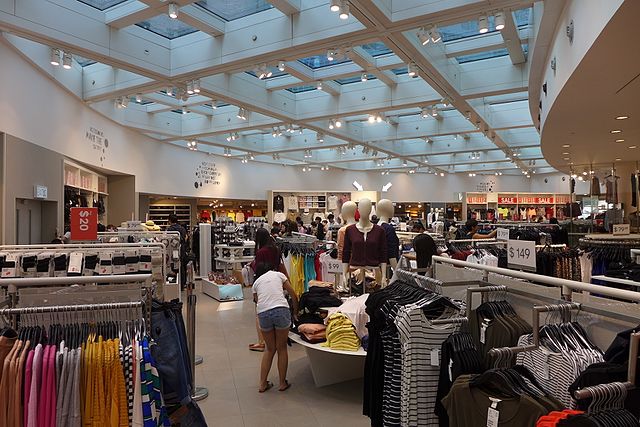How fast fashion’s grip on youth may be destroying their future
Garment production rates have skyrocketed in recent years, fueling climate concerns. But teenagers in New England prep schools reported that buying fast fashion is often their only option.

BY SOUTH FULWEILER
Out of sight out of mind.
This is the driving principle of the fast fashion industry, and it has worked for decades.
Fast fashion has a herculean hold on the world today, especially on the younger generations. Goliath brands squeeze out smaller alternatives to produce inexpensive and low-quality garments inspired by celebrity fashion or hot runway looks.
The fast fashion business model functions at an extraordinary speed: trends begin and gain popularity through social media, and big garment businesses scramble to produce products as soon as possible.
The pattern has taken particularly deep roots in many New England private schools; Annika Stookey, a rising junior at a Vermont prep school, said that she and her classmates regularly rely on fast fashion brands.
“I mean, every girl at school shops there,” Stookey said, “Everybody does.”
But the rapid speed of the trend cycle and resulting manufacturing storm often obscures environmental repercussions. The majority of fabrics today are synthetic, meaning when found in oceans or landfills they do not decompose. Microplastics circulate in bloodstreams, are consumed by animals, contaminate bodies and water and pollute shorelines.
The carbon emissions from garment production contribute to the greenhouse effect which is warming up the planet from the inside out. Chemicals leach out of clothing and manufacturing materials to further pollute the coast. The scale at which fast fashion functions makes these effects exponentially more drastic.
Stookey said economic divides in her school are a factor in the amount of low quality clothing consumed. She said the students who fall on the wealthier side of the economic spectrum usually buy the more expensive clothing fast fashion works to copy, but those who are less economically advantaged rely on the low cost of fast fashion merchandise.
“It’s easy for everyone to overlook unethical practices and environmental impact for lower prices,” Stookey said.
She explained that even though there is some understanding among her school that what happens behind the scenes isn’t pretty, most will look the other way.
Paige Breyer, a rising senior and member of her Rhode Island prep school’s sustainability board, echoed Stookey’s sentiment. The path forward, she said, lies in making sustainable brands more accessible.
“It is imperative that sustainable clothing becomes more affordable,” Breyer said. “Today, the sustainable fashion industry is extremely exclusionary.”
According to Breyer, there is little awareness about the problems with fast fashion, and there is tremendous pressure to keep up with microtrends. This peer pressure only fuels fast fashion’s fire.
“The culture of [my school] often causes students, especially underclassmen, to feel as though they must participate in certain trends or dress a certain way,” Breyer said.
For now, students will continue to simultaneously grapple with the economic and ecological impacts of their clothing choices.






